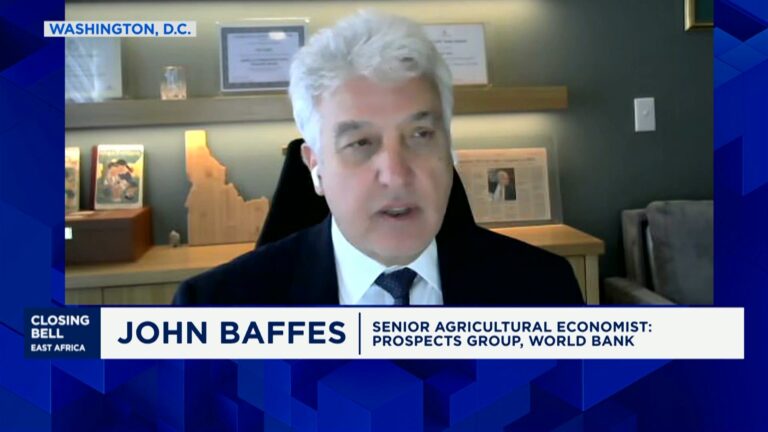The global commodity markets are bracing for a formidable period ahead, as highlighted in the latest World Bank Commodity Markets Outlook for 2025. The report famously projects that commodity prices will decline for a fourth consecutive year, forecasting a 7% drop in 2025 and continuing into 2026. This sustained downturn marks the continuation of a challenging period for commodity producers worldwide.
In a recent interview with CNBC, John Bafis, Senior Agricultural Economist at the World Bank, elaborated on the report’s findings and implications. One of the most striking insights is the anticipated plunge of commodity prices to multi-year lows, notably in the energy and food sectors. “Most commodity prices are expected to face a downturn for this year and next year, with only a few exceptions,” Bafis noted.
Among the exceptions defying the overall trend are precious metals, fertilizers, and beverage commodities like coffee and cocoa. Gold has been steadily increasing for eight uninterrupted quarters, illustrating resilience amidst a general price decline. Fertilizer prices, a crucial agricultural input, have also seen upward trends. Beverage commodities, including coffee and cocoa, are experiencing price rises due to supply disruptions in countries like Brazil, significant producers of these commodities.
Despite a relatively stable global growth projection from institutions like the World Bank and IMF, the commodity markets tell a different story. Bafis attributed the price decline to a robust supply environment, particularly in energy markets. Oil markets have seen an increase in supply, thanks to OPEC’s decision to lift previous cuts and robust production levels from leading suppliers like the United States. “On the supply side, what we see is lots of oil entering the market,” he stated, emphasizing a strong supply while noting a weakening demand, particularly from China. The latter has embraced electrification at a remarkable pace, dampening oil demand despite persistent geopolitical tensions.
The discourse around food prices paints a mixed picture. Lower food prices translate to reduced inflation and greater affordability, beneficial for consumers. However, rising prices for key agricultural commodities such as cocoa and coffee, staples for the African continent, reflect a different reality. Bafis discussed the upward trend of these commodities over the last couple of years, driven significantly by climate-related supply disruptions. Weather conditions have notably impacted coffee production in Brazil and cocoa production in West Africa, underlying the impact of climate change on commodity markets.
Fertilizer prices are predicted to ascend by 20% this year before stabilizing in the following year, posing challenges for the agricultural sector. However, the overall food commodity prices should decline, followed by a period of stability, which is good news for food-importing countries.
With the oil market, Bafis provided figures suggesting a significant reduction in oil prices, with an expected average of $68 per barrel in 2025, down from $81 per barrel the previous year. The forecast for 2026 suggests further declines before a slight recovery. This market dynamic is mostly due to increased supply, including new entrants from South America, alongside geopolitical influences that have not significantly altered market conditions.
Lastly, discussing the anticipated impact of La Niña, Bafis expressed that while it could affect local agricultural production in regions like South Africa and North America, it is unlikely to majorly disrupt global commodity markets. Interestingly, the discussion touched on AI’s potential footprint in agriculture, hinting at technological advancements that could reshape market dynamics in the coming years.
In summation, while geopolitical events and trade disruptions continue to influence individual commodity markets, their global impact remains limited. Instead, the current supply narratives combined with evolving demand constraints outline the anticipated trajectory for global commodity prices.
World Bank’s outlook provides a crucial lens through which producers, exporters, and policy-makers must strategize as they navigate the intricate tapestry of the global market in the years ahead.
[ad_1]
Images are for reference only.Images and contents gathered automatic from google or 3rd party sources.All rights on the images and contents are with their legal original owners.
[ad_2]

